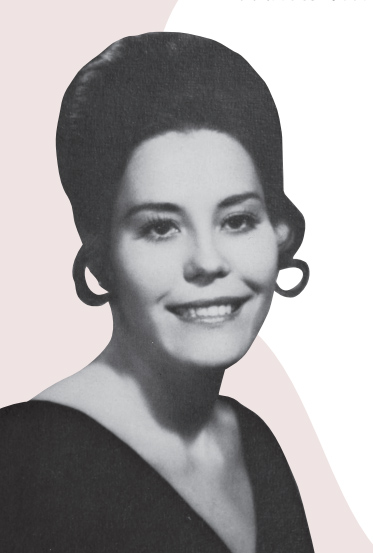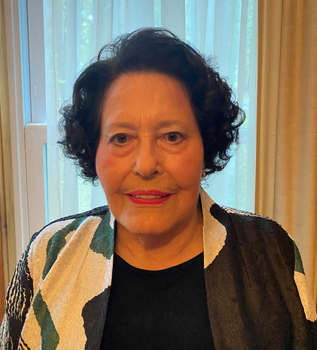Melody Ann Stancil MD, WMC/MCP ’71
By Lyric Aquino

It was 1971. Disney World was in the midst of opening its doors for the first time and the Pentagon Papers had made their way throughout the media. While Ike and Tina Turner climbed the charts with the hit classic “Proud Mary,” Melody Ann Stancil was finishing her studies and preparing for the milestone she’d spent over eight years working for: the moment she could officially be called “Dr. Melody Ann Stancil.”
“I just really wanted to be a physician. I can’t really explain why I had the desire, but that desire kept me going,” Stancil says.
Back then, Drexel University College of Medicine went by a different name entirely. Stancil even had the option of choosing one of two names to add her to her diploma — Woman’s Medical College of Pennsylvania or Medical College of Pennsylvania. She says the spirit of the school’s reputation as a trailblazing education hub for difference-makers was apparent long before the name was changed.
“I knew where I was supposed to be when I went to Drexel, when I went to medical school,” Stancil says. “I had received a fantastic medical education at Drexel and in many of the areas I had better training than some of my contemporaries. I felt like I was very well educated and very well prepared,” she says. She felt so prepared that, when she was matched for an internship at Emory University Affiliated Hospitals in Atlanta, she ended up staying there, and went on to complete her three-year residency in anesthesiology.
“I Knew Where I Was Supposed to Be”
After she finished her residency, Stancil went into private practice in suburban Atlanta. But during her last year of residency, she developed medical issues that affected her availability and, due to the nature of a physician’s life, she found herself switching career paths after two years.
Born and raised in the South, Stancil knew she wanted to stay in the area and make a difference in small, rural towns she had seen and been part of while growing up — and in her new position she did just that, and found it to be equally rewarding. In 1976, Stancil accepted a position with the State of Georgia, becoming the district health director for 13 counties. She became responsible for all county health departments and community mental health centers in that geographical area.
“I found that I really enjoyed what I was doing. Because of my anesthesiology background, I found myself assisting with the development of a regional emergency medical services system. I also became certified in Advanced Cardiac Life Support, which involved training paramedics and other health professionals. I was involved in planning and development of many educational activities and programs that people who just finished medical school weren’t getting to do,” she says. “I became very involved in working in medical education and recruitment for health careers in northeast Georgia.”
“I just really wanted to be a physician. I can’t really explain why I had the desire, but that desire kept me going.”
Her most beloved work has been the time she’s spent with rising juniors and seniors in college and pre-med students in a Pathways to Medical School Program, a community-based, state-funded program through the Area Health Education Centers. The program prepares eight prospective medical students each summer for medical school interviews as well as developing their personal statement on their applications. The goal of this program is to encourage medical students to pursue primary health care careers in medically underserved areas or populations.
Although the program has been active in Stancil’s community for eight years, COVID-19 set the effort back a bit. Nevertheless, Stancil says students have persisted, and over half of the program’s participants have been accepted into medical school. But after tackling school interviews, under-graduate degrees and the stress of the application process, many medical students face a new challenge that keeps growing over time — financial obstacles.
Statistics from the Educational Data Initiative state that the average medical student graduates with about $215,000 of debt, a burden Stancil says deters people, especially in rural areas, from pursuing higher education in the medical field.

Stancil saw the difficulties preventing young people from pursuing a medical track, not only from her own time in school, but also during her nephew’s work as well. Ryan Stancil, MD, a 2012 Drexel University College of Medicine graduate, was able to fund his medical career through opportunities with the United States Navy. So, Stancil and her classmates established the WMC/MCP Class of 1971 Scholarship to celebrate their 50-year graduation anniversary in 2021. Several medical students have already benefitted from this group effort. In addition, Stancil recently created a generous legacy scholarship in her name as a bequest in her estate plan. By establishing the Melody A. Stancil, MD WMC/MCP ’71 Scholarship, Stancil carries on the tradition of her medical school and provides much-needed support for today’s medical students.
“I had been involved with the Alumni Association for a number of years, and I know how important having good financial aid is,” she says. “I’m hoping the scholarship can help a woman, or a medical student in general, pursue a degree in medicine and primary care,” she says. “I’ve worn so many different hats and seen so many different things. I’ve had a very fulfilling career and a rewarding life.” Now a 77-year-old retiree, Stancil resides in Maysville, Georgia, a small town of approximately 1,800, where one primary care physician serves the entire county. The nearest hospital is 27 miles away and she can barely get a cell phone signal from her home. She spends her days volunteering with several nonprofit boards, her church and her local Rotary Club.
Stancil reflects warmly on her journey from Drexel to her medical career, to the health department and now her volunteer work. “I’m really enjoying where I am,” she says. “I am truly blessed.”
Back to Top